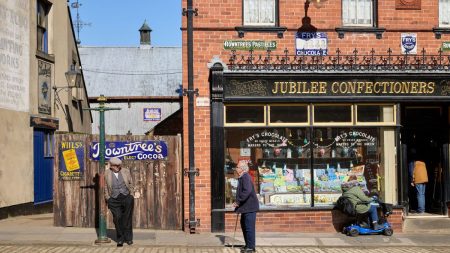The Thessaloniki metro project has been a significant undertaking in Greece, with construction spanning over two decades and finally nearing completion. This extensive development not only aims to improve urban transportation but has also turned into a remarkable archaeological excavation site. Throughout the construction process, workers unearthed around 300,000 artifacts, showcasing the rich history of Thessaloniki, one of Greece’s largest cities.
Among the many discoveries, ancient Roman roads stood out, providing invaluable insights into the city’s infrastructure during the Roman Empire. These roads not only reveal the engineering prowess of the time but also illustrate how connectivity played a vital role in the city’s development. Alongside the roads, exquisite mosaics were found, which exemplified the artistic skills of past civilizations. These artifacts highlight the cultural richness that characterized Thessaloniki throughout various epochs.
Furthermore, the construction led to the discovery of ancient burial sites that have shed light on the funerary practices of earlier inhabitants. These sites are crucial for understanding the social and cultural dynamics of the populations that once thrived in the region. The artifacts retrieved from these sites are expected to provide historians and archaeologists with detailed information regarding the rituals, beliefs, and everyday life of the city’s ancient residents.
The abundance of archaeological findings has reignited discussions on the significance of preserving cultural heritage amid modern development. The Greek government and local authorities faced the challenge of balancing progress with the protection of historical sites. As plans for the metro’s operation continue, there is a strong emphasis on integrating the archaeological findings into the metro stations, allowing for public education and appreciation of Thessaloniki’s rich history.
As the metro prepares to open, the excitement surrounding the project has grown, indicating a renewed interest in urban infrastructure that respects and incorporates historical contexts. The integration of the discoveries into the metro design represents a step toward enhancing public awareness of the city’s heritage. This commitment not only benefits local residents but also attracts tourists, providing an opportunity to explore Thessaloniki’s storied past through a modern transportation system.
In summary, Thessaloniki’s metro project serves as a unique case study of how urbanization can successfully coexist with archaeological preservation. With over 300,000 artifacts unveiling the history of the region, the eventual opening of the metro will not only facilitate transport but also create an opportunity for reflection on the significant events and cultures that have shaped Thessaloniki over the centuries. As the city embraces its past while moving toward the future, it highlights the importance of safeguarding and celebrating cultural heritage in the face of modernization.














